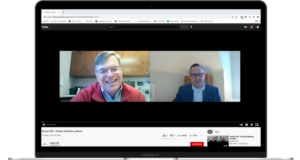The Upcoming Entry-Level Driver Training (ELDT) Rule
Sean Nebert, J.J. Keller Director of Consulting Services – Transport
After several years of being pushed out due to technological challenges, the Entry-Level Driver Training (ELDT) rule compliance date of February 7, 2022, is almost here.
The rule establishes minimum training requirements for any driver trainee applying for a Class B or Class A CDL, any driver trainee upgrading from a Class B to a Class A CDL, and any driver trainee seeking a School Bus, Passenger, or Hazardous Materials endorsement for the first time.
A trainee must obtain a certificate of completion, and they can only obtain it from a training provider that is registered on the FMCSA’s Training Provider Registry (TPR). Examples of training providers are schools, motor carriers, and other entities that provide CDL instruction. The training provider must also maintain information in the TPR, including the upload of training certificates to the TPR once a trainee has completed their training. This information is electronically transmitted from the TPR to the state driver’s license agency and the certificate must be in their system in order for the trainee to obtain their license.
As of the compliance date of February 7, 2022, all training providers must…
- Register and be listed on the FMCSA’s TPR
- Have an ELDT compliant training curriculum in accordance with 49 CFR Part 380 Appendices A through E
- Have instructors that meet the qualifications under §380.713
- Have facilities compliant with §380.709
- Have vehicles compliant with §§380.711, 392, 393, and 396 and applicable to the proper class license or endorsement that the driver trainee is undergoing training for
- Assess driver trainees in accordance with §380.725
- Produce and upload a Driver Training Certification into the TPR when a trainee completes their training program
- Retain required documents and records under §380.725 for at least 3 years
The enormity of the change to the trucking industry under the ELDT rule cannot be understated. The rule sets requirements where none existed before, and the required curriculum is robust. The curriculum is split into two primary elements, theory and behind the wheel.
For example, CDL Class A theory instruction must cover multiple topics in these five major modules:
- Basic Operation (7 topics)
- Safe Operating Procedures (7 topics)
- Advanced Operating Practices (3 topics)
- Vehicle Systems and Reporting Malfunctions (3 topics)
- Non-Driving Activities (10 topics)
CDL Class A behind-the-wheel instruction consists of both range and public road curriculum, and must cover topics under the following modules:
- Vehicle Inspection
- Coupling and Uncoupling (Class A only)
- Backing
- Vehicle Control
- Shifting/Transmission
- Communications/Signaling
- Visual Search
- Speed and Space Management
- Safe Driver Behavior
- Hours-of-Service Requirements
- Hazard Perception
- Railroad-Highway Grade Crossing
- Night Operation
- Extreme Driving Conditions
- Skid Control/Recovery, Jackknifing, and Other Emergencies
The FMCSA plans to audit training providers to ensure compliance with the new rule. Any training provider that is found to be non-compliant can be removed from the Training Provider Registry and may no longer be allowed to train entry level drivers until their program is compliant.
For more information about the ELDT rule, download J. J. Keller’s FREE whitepaper.




